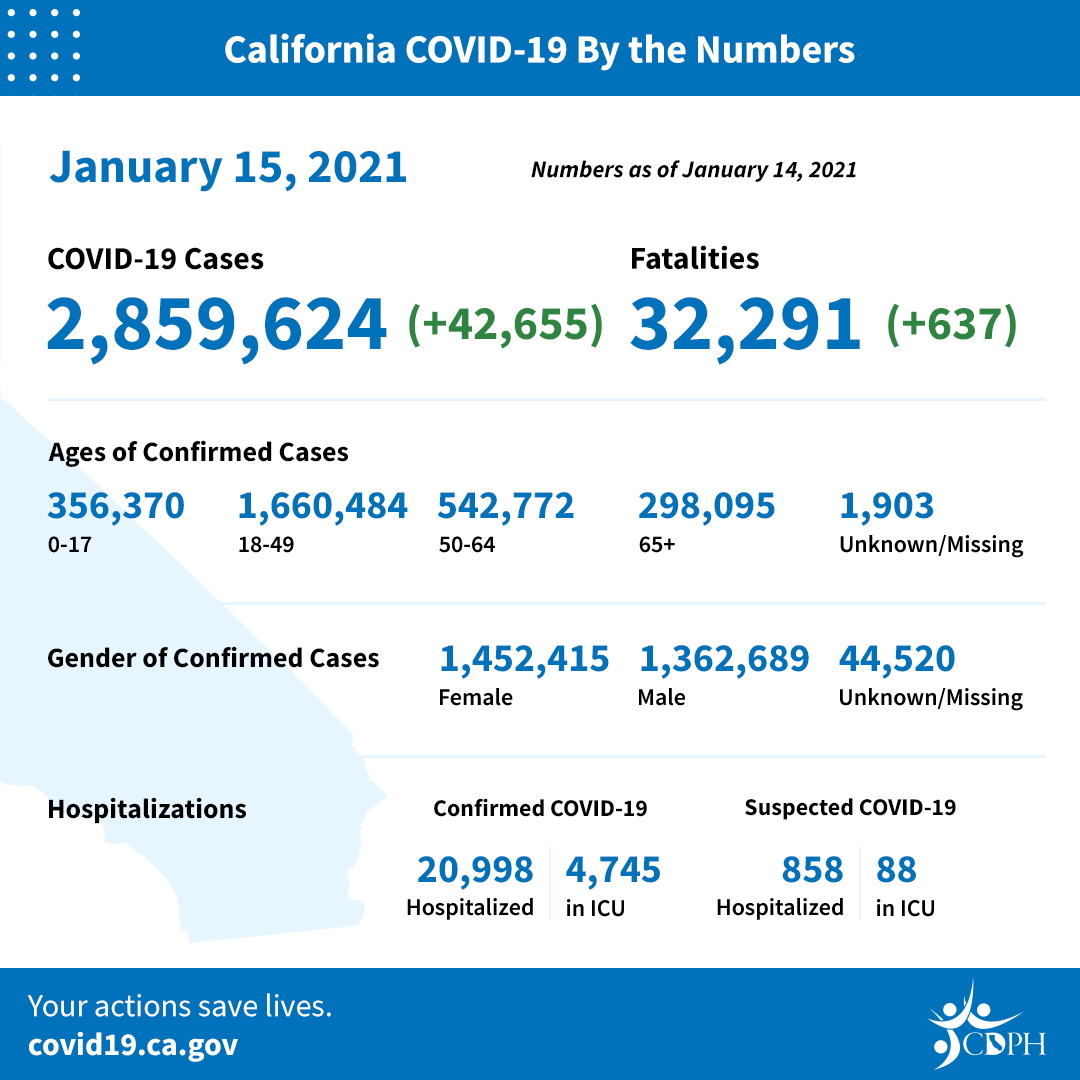The ICU capacity projections are based on four factors: current estimated regional ICU capacity available, measure of current community transmission, current regional case rates and the proportion of ICU cases being admitted. Decreasing community transmission and increasing the health system capacity can help a region’s projected ICU capacity so they can exit the order.
Counties within the Greater Sacramento and Northern California region are under the tiering system and rules of the Blueprint for a Safer Economy. Read the full Regional Stay Home Order, Supplement to the Order, and frequently asked questions.
Due to high rates of COVID-19 hospitalizations impacting the health care system, California is also under a Limited Stay at Home Order. The order applies to all counties that are currently under the Regional Stay at Home Order and those in Tier One (Purple) of the Blueprint for a Safer Economy. The Limited Stay at Home Order will expire after the Regional Stay At Home Order has been terminated in all regions of the state.
Hospital Surge Order
Today CDPH updated the Hospital Surge Public Health Order to clarify when hospitals must make notifications to state and local authorities. The order also includes technical updates and updates on when specific terms of the order take effect. The updated order continues to require some non-essential and non-life-threatening surgeries to be delayed in counties with 10% or less of ICU capacity under the Regional Stay at Home Order where the regional ICU capacity is at 0%. Examples of procedures that may be delayed include carpal tunnel release and non-urgent spine surgeries. Surgeries for patients who have serious and urgent medical conditions will continue. Examples of procedures that will continue include serious cancer removal and necessary heart surgeries.
The order requires hospitals statewide to accept patient transfers from facilities that have implemented contingency or crisis care guidelines as long as those transfers can be done capably and safely. On December 28, 2020 CDPH provided guidance to health care facilities on implementing the Crisis Care Continuum Guidelines issued in June 2020.
Counties Currently Impacted by the Hospital Surge Order:
San Joaquin Valley: Fresno, Kern, Kings, Madera, Merced, San Benito, San Joaquin, Stanislaus, and Tulare.
Southern California: Imperial, Los Angeles, Orange, Riverside, San Bernardino, San Diego, Santa Barbara, and Ventura
Statewide COVID-19 Data as of Today
There have been 37,449,536 tests conducted in California. This represents an increase of 319,170 during the prior 24-hour reporting period.
As case numbers continue to rise in California, the total number of individuals who will have serious outcomes will also increase. There have been 32,291 COVID-19 deaths since the start of the pandemic.
As of January 14, providers have reported administering a total of 1,068,874 vaccine doses statewide. Numbers do not represent true day-to-day change as reporting may be delayed. As of January 14, a total of 3,099,425 vaccine doses, which includes the first and second dose, have been shipped to local health departments and health care systems that have facilities in multiple counties.

Tracking COVID-19 in California
State Dashboard – Daily COVID-19 data
County Map – Local data, including tier status and ICU capacity
Data and Tools – Models and dashboards for researchers, scientists and the public
Blueprint for a Safer Economy – Data for establishing tier status
ADDITIONAL DATA & UPDATES
Vaccinate All 58
In order to increase the pace of COVID-19 vaccine distribution to those at greatest risk, the state is prioritizing individuals 65 and older to receive the vaccine as demand subsides among health care workers. This effort will help to reduce hospitalizations and safe lives. For more information on the vaccine effort, visit the Vaccinate All 58 webpage.
Safe Schools for All
Governor Gavin Newsom launched the Safe Schools for All Hub as a one-stop shop for information about safe in-person instruction. For more information on the transparency, accountability and assistance measures related to California’s Safe Schools for All plan, visit the Safe Schools for All Hub.
Travel Advisory
CDPH has issued an updated travel advisory. Postponing travel and staying home is the best way to protect yourself and others from COVID-19. Non-essential travelers from other states or countries are strongly discouraged from entering California and should adhere to the state’s self-quarantine procedures for 10 days.
Health Care Workers
As of January 14, local health departments have reported 77,634 confirmed positive cases in health care workers and 296 deaths statewide.
Health Equity
The COVID-19 pandemic has highlighted existing inequities in health that are the result of structural racism and poverty, and the disproportionate prevalence of underlying conditions such as asthma and heart disease among Latinos and African Americans. California is committed to understanding these inequities to help ensure the best health outcomes for all Californians. View COVID-19 Race & Ethnicity Data and Cases and Deaths by Age Group. Visit the new Health Equity Dashboard.
Testing Turnaround Time
The testing turnaround time dashboard reports how long California patients are waiting for COVID-19 test results. During the week of January 3 to January 9, the average time patients waited for test results was 1.4 days. During this same time period, 62% of patients received test results in one day and 90% received them within two days.
Multisystem Inflammatory Syndrome in Children (MIS-C)
As of January 11, 167 cases of Multisystem Inflammatory Syndrome in Children (MIS-C) have been reported statewide. MIS-C is a rare inflammatory condition associated with COVID-19 that can damage multiple organ systems. MIS-C can require hospitalization and be life threatening.
Your Actions Save Lives
Protect yourself, family, friends and your community by following these prevention measures:
If you are experiencing symptoms of COVID-19 (fever, cough, shortness of breath, fatigue, muscle or body aches), call your health care provider.